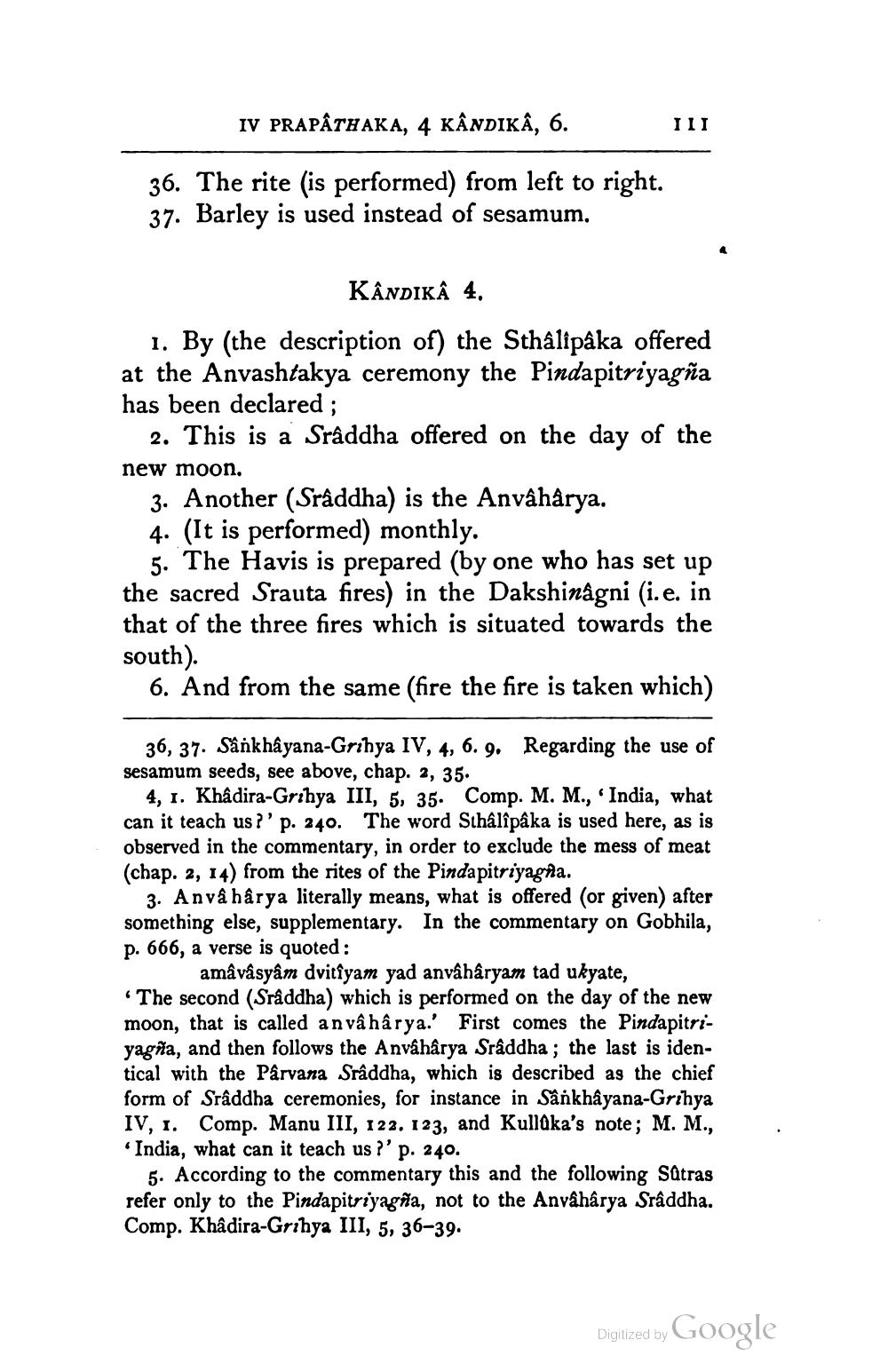________________
IV PRAPÂTHAKA, 4 KÂNDIKÂ, 6.
36. The rite (is performed) from left to right. 37. Barley is used instead of sesamum.
KÂNDIKÂ 4. 1. By (the description of) the Sthalipâka offered at the Anvashtakya ceremony the Pindapitriyagña has been declared ;
2. This is a Sraddha offered on the day of the new moon.
3. Another (Sraddha) is the Anvâhârya. 4. (It is performed) monthly.
5. The Havis is prepared (by one who has set up the sacred Srauta fires) in the Dakshinagni (i.e. in that of the three fires which is situated towards the south).
6. And from the same (fire the fire is taken which)
36, 37. Sânkhâyana-Grihya IV, 4, 6. 9. Regarding the use of sesamum seeds, see above, chap. 2, 35.
4, 1. Khâdira-Grihya III, 5, 35. Comp. M. M., India, what can it teach us ?' p. 240. The word Sthâlîpâka is used here, as is observed in the commentary, in order to exclude the mess of meat (chap. 2, 14) from the rites of the Pindapitriyaga.
3. Anvâ hârya literally means, what is offered (or given after something else, supplementary. In the commentary on Gobhila, p. 666, a verse is quoted:
amâvâsyam dvitîyam yad anvähâryam tad ukyate The second (Sraddha) which is performed on the day of the new moon, that is called a n vâ hârya.' First comes the Pindapitriyagña, and then follows the Anvähârya Sraddha; the last is identical with the Pârvana Sraddha, which is described as the chief form of Sraddha ceremonies, for instance in Sånkhayana-Grihya IV, 1. Comp. Manu III, 122, 123, and Kullûka's note; M. M., India, what can it teach us ?' p. 240.
5. According to the commentary this and the following Satras refer only to the Pindapitriyagña, not to the Anvâhârya Sraddha. Comp. Khâdira-Grihya III, 5, 36-39.
Digitized by Google




